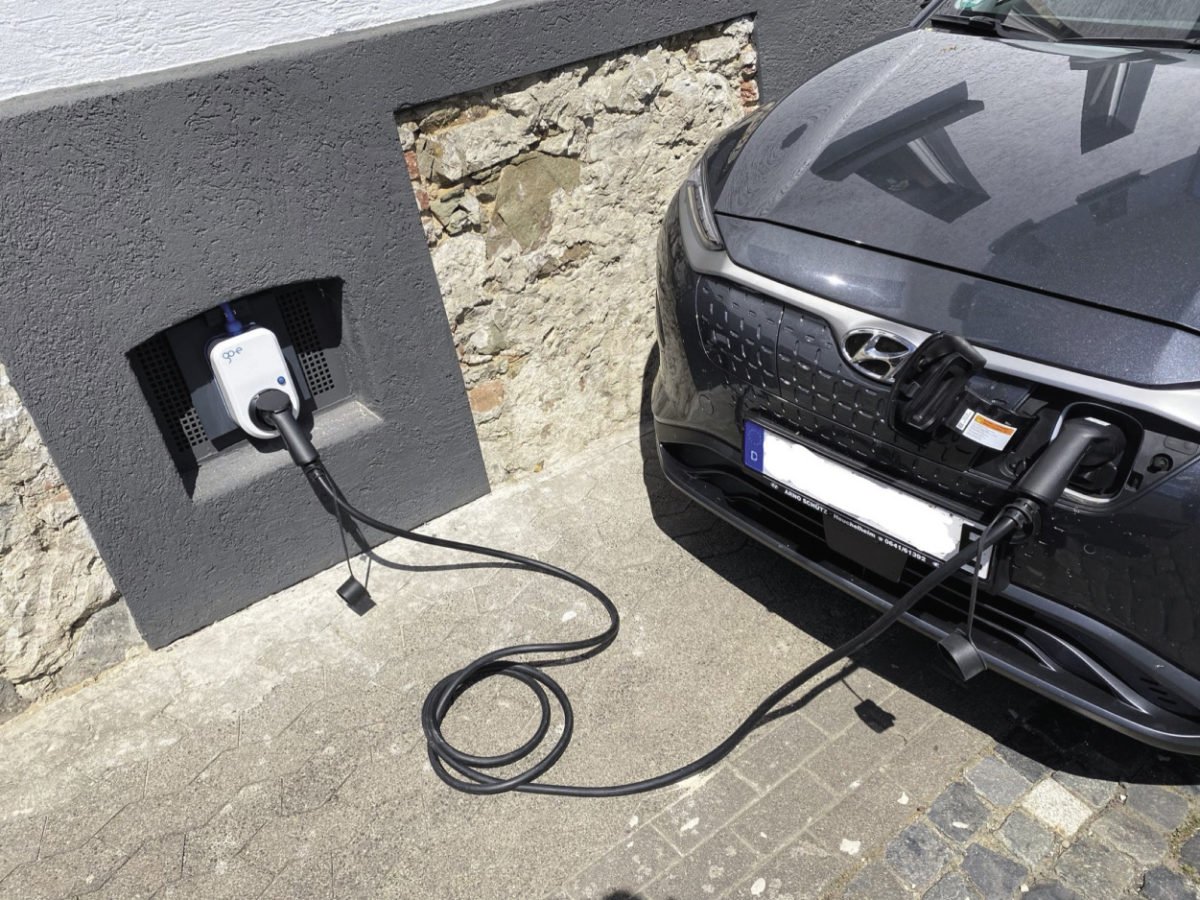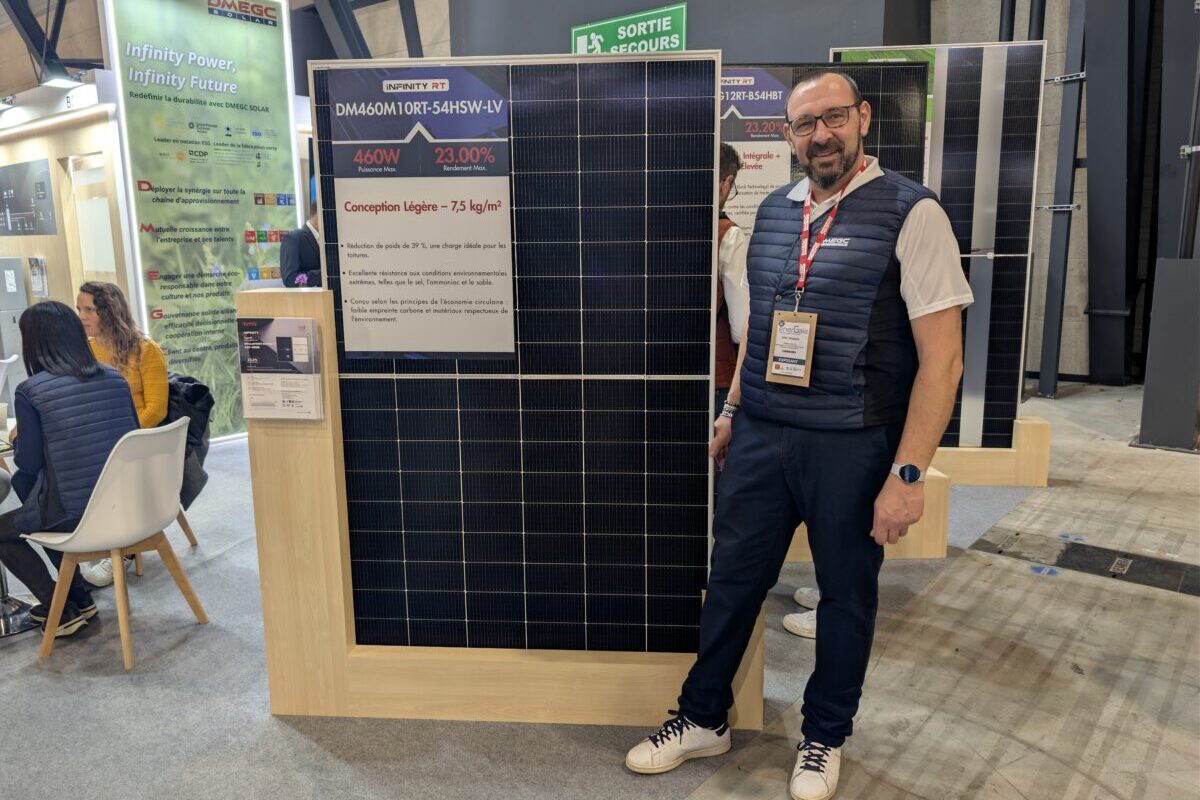From pv magazine 02/2022
One of the biggest differences between residential EVs is in terms of solar-optimized charging. With solar-optimized charging an energy management system adjusts the charging power so that, as far as possible, charging always takes place with the surplus rooftop solar electricity.
Such systems, if there is little sunshine or household electricity consumption is high, can reduce the car-charging current. This increases self-consumption and thus saves money. It can also make driving a car a “guiltless pleasure” when it’s been charged with your own solar power.
Today, solar-optimized charging is not yet standard among EV chargers. Of the residential chargers in the market survey carried out by pv magazine Deutschland, just under 40% can do it with their own app. Some of the devices rely on a connection to third-party energy management systems. When such systems that can be optimized by virtue of a third-party app are included, a full 60% of the surveyed EV chargers have this capability.
E-mobility: On a greener road to transportation
 Urban transportation is key to modern civilization. But it has come at a cost, contributing to a dangerous carbon footprint, high levels of smog, a growing inequality gap, and the destruction of some of our most fragile environments. Thus, in the first quarter of this year, pv magazine’s UP Initiative will focus on the rise of e-mobility and how it can complement the renewable energy transition. Read our coverage here.
Urban transportation is key to modern civilization. But it has come at a cost, contributing to a dangerous carbon footprint, high levels of smog, a growing inequality gap, and the destruction of some of our most fragile environments. Thus, in the first quarter of this year, pv magazine’s UP Initiative will focus on the rise of e-mobility and how it can complement the renewable energy transition. Read our coverage here.On the technical side, the energy management system must obtain the information it needs on power levels from the PV system, to which it needs to adjust. This can be done by measuring the power at the grid connection point, or by communicating with the inverter or the battery storage system, which also know and use this value. Some devices surveyed allow both.
It is obvious that here, as is always the case with home automation and components from different manufacturers, that the interfaces between the EV charger, inverter or electricity meter are a challenge.
Given the importance of harmonizing interfaces, it is naturally an advantage when devices are provided by one manufacturer. All surveyed battery storage manufacturers that provide EV chargers claim to have implemented solar optimization. As a rule, battery storage owners will normally use these products.
Time-of-use tariffs
A third way in which solar charging can be optimized is in cloud-based charging management systems that access data via the inverters’ back-end systems, rather than locally. In such systems, the EV charger is controlled remotely, via the internet. The Easee wallbox, for example, is not yet available in Germany with its own add-on device that enables local solar-optimized charging, but the manufacturer says that its EV Autocharge platform functions as a cloud-based solution.
Energy provider Tibber can also integrate the Easee charger into its energy management system. The app is cloud-based and reads data from inverter platforms, thereby learning how high the excess feed-in is and thus regulating solar-optimized charging. It also controls the EV charger not via a direct interface, but via an interface to the Easee backend, as Tobias Aspenberg, product manager at Tibber, explains.
At the same time, the app optimizes for the time-of-use electricity tariffs offered by the electricity provider. This means that the car will be charged either when there is surplus solar power, or when electricity prices on the exchange are low. To date in Germany, the difference between times when electricity is expensive and times when it is cheap has been relatively small, compared to the absolute price. But the swings have increased sharply in recent months.
Awattar or Tesla also offer time-based electricity rates. Awattar, however, works in a fundamentally different manner. The company provides EV charging manufacturers with electricity price data, and they can take that into account in their charging management.
“Our customers don’t need an app from us because the wallbox manufacturer’s app takes care of the energy management,” writes CEO Simon Schmitz, in reference to “wallbox” EV chargers.
Solar-optimized charging reaches a limit when solar power drops below 4.2 kilowatts. At this point the minimum charging current per phase, set by the charging standard, is undercut. Three-phase charging is then no longer possible. 32 devices surveyed therefore allow automatic switching to single-phase charging, which makes it possible to charge at lower powers.
However, if one has battery storage, the effect of this function is reduced. “It is possible via the software of the home power plant to release a self-defined part of the storage capacity for short-term support of the charging process, even during the day, so that, for example, the required power for three-phase charging is maintained in the event of cloud drafts,” writes Ralf Ossenbrink, the technical marketing team leader at Hager Energy. And if the storage unit has a sufficiently high discharge capacity, you don’t need the phase switching, even if you are charging purely from the storage unit into the EV.
Solar optimization
Both solar-optimized charging and time-of-use electricity tariffs can be questioned as to whether they are economically important issues. Bernhard Beck – best known as the founder of solar EPC Belectric and now an investor in a number of companies, including EV charger manufacturer Libreo – considers the effort required for solar-optimized charging to be considerable, particularly when compared to the payoff.
Given the marginal economic impact Libreo has developed an intermediate solution. “Solar-optimized charging is costly because many customers don’t have a data line into their garage,” Beck says. “And if you have to install a new intermediate meter at the grid connection point, you often have to bring the old meter cabinet up to current standards as well.” And these additional costs can quickly wipe out the savings delivered by optimization.
If you charge purely with rooftop solar for 10,000 kilometers, you need about 2,000 kilowatt-hours and, in a country with high electricity prices such as Germany, will save roughly €400 compared to charging from the grid. And those with only a small rooftop PV system are likely to fall well short of this level of EV feed-in.
“Often, there is not enough solar power to charge at all due to the weather,” Beck points out, with cloudy Germany on his mind. Even if 25% more solar power and less grid power were to flow into the car battery as a result of the solar-charging optimization, that would only add up to €100 of savings a year.
In the end, what solution makes economic sense also depends on the size of the rooftop PV system, any battery storage that may be available, and the amount of car charging needed. The bigger the rooftop array, the impact of solar-optimized charging is likely to increase.
But there are other arguments in favor of solar-optimized charging. It relieves the strain on the electricity network. Moreover, the difference in the carbon footprint of solar power compared to grid power is still huge. If you manage to drive 20,000 kilometers a year using solar instead of grid power, you will have saved 1.5 tons of CO2. For quite a few drivers, it could provide significant motivation.
There are further differences in the design of solar-optimized charging. It is true that almost all providers with their own charging solutions offer an app that allows drivers to prioritize whether they have time to wait for solar power or want to use grid power. But only 36 of the 41 systems that provide their own charging management allow users to designate whether a residential battery or an EV should be charged. This is relevant because on a sunny day, the charging management system must decide whether to charge the car or the battery storage. If one needs the car charged and ready to go, it makes sense to make it a priority. But if the EV isn’t needed, it makes sense to save the solar energy to serve the evening consumption from the battery.
EV communication
The communication between EV and charger is also a dynamic space at present. Basically, the communication of the car with the charger will be raised to a new level by ISO15118 in its version “-20”, which is necessary for bidirectional charging to occur in the future. The standard will also allow the EV’s state of charge to be monitored remotely via the charging connection to the wallbox, which is not yet the case. That is why at the moment, most apps allow the user to define the level of charging for a certain amount of time, not the level to which the car should be charged.
In order to change this, the manufacturers Easee, eCharge Hardy Barth, Elinta Charge, Enercharge, Growatt, Lade, Porsche, Siemens, Solarwatt and Wirelane state that the functionality to remotely monitor charge status in the EV exists for some of their devices or can be established via a software update.
An alternative is for energy management software or the EV charger app to access the car’s app and use it to learn how much range a car has left to charge. Several have planned this capability, but so far it has only been implemented by Elli for its parent Volkswagen’s EVs, by Porsche, and by the vehicle-independent charging boxes from Lade GmbH. The completely manufacturer-independent open-source charging management system EVCC has also implemented this function.
Conversely, an EV owner may also want to plan the EV charging before getting out of the car via the car interface. Of the devices with their own solar optimization, only Elinta, Growatt and Lade state that this is possible, in principle. The Porsche Ladebox also allows this. In this case, the solar optimization is again implemented via a cloud-based yield estimation, which means that household power consumption is not taken into account.
This content is protected by copyright and may not be reused. If you want to cooperate with us and would like to reuse some of our content, please contact: editors@pv-magazine.com.



The best technology for the future would be to convert the electricity to hydrogen. This method is not as efficient as direct conversion to batteries. The advantage is you can save a larger quantity of energy that lasts much longer than batteries. You can fill your car 100% within five minutes. Also hydrogen is a much safer storage method. Hydrogen is more versatile. Hydrogen handles better in cold temperatures. Hydrogen and hydrogen production has the least impact to the environment. Hydrogen is unlimited and will not be impacted in the future by Li supply. And you can use it if you have an airplane.
Great article. Here in Halifax, NS Canada we have net metering and my solar array banks excess power that I produce and I can draw that power back when required such as when charging my 2022 Kona EV.
Jim does the government charge you for sending your excess power to the grid and then charge you again to get it back .
Such as having to pay a fee to be attached to the grid even if you dont use it
I have been doing this for several years with a MyEnergi Zappi EVSE. It is a great unit that can stop altogether charging the EV when excess generation isn’t available or to reduce to minimum charging.
In the US, 1-in-4 people do not have access to net metering. I am one, and it makes a substantial economic difference when you are paid wholesale rates for your electricity. This is most common when electrical cooperatives are the electricity provider.
Look for solar optimization to grow when V2G and V2H become standard practices.
I have a Sense monitor that has the information of my excess solar power but there is no way to provide this to my Nissan Leaf charger to charge only from excess solar
wall box has has a charger that will do it but you have to install there power monitor it also over a thousand $.
No charge to get power back from provider…it is banked and used as needed.